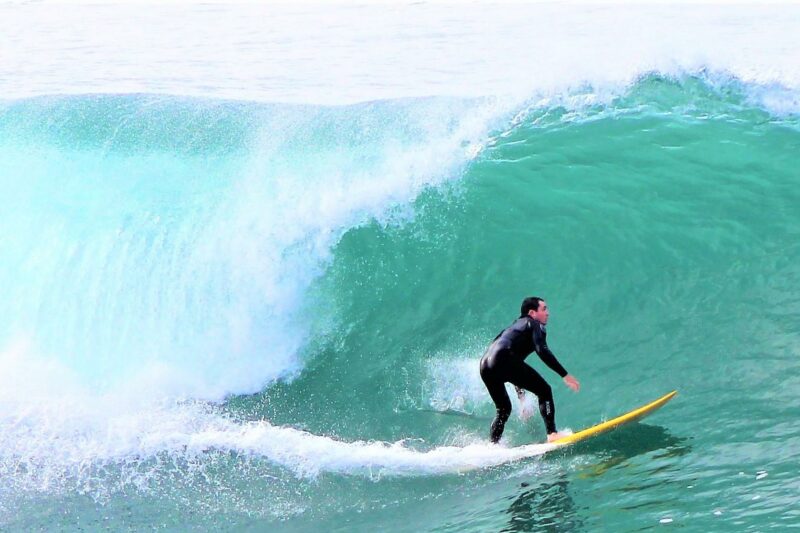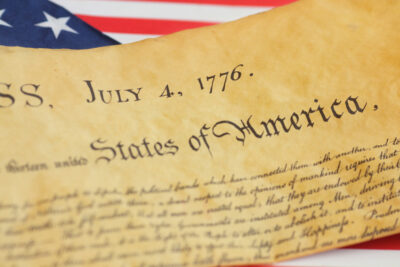By Michele E. Buttelman
Nothing speaks to the soul of a true Californian than the beach and the surfing culture it has spawned. From La Jolla to the Mavericks in Half Moon Bay surfing “hot spots” dot the California coastline.
To enjoy the “romance” of the surf culture as a participant, or simply to watch the amazing feats of surfer athletic prowess, here’s a road trip you’ll always remember.
I recommend renting a convertible to your trip up the coast. A convertible might not have the nostalgia factor of an old “Woodie” station wagon, but it’s the next best thing.
Make sure to create a playlist of famous “surf” music including anything by The Beach Boys, (most importantly “Surfing U.S.A.” and “Surfin’ Safari”) and Jan and Dean, as well as classics like “Wipeout” by The Surfaris, “Surfer Dan” by The Turtles and “Surfin’ Tragedy” by The Sentinals.
For an extra dose of motivation, or nostalgia, watch a few classic “feel good” surfing films like “Gidget” (1959), “Beach Blanket Bingo” (1965) and “Beach Party” (1963).
Add a few of these great surf films into mix: “The Endless Summer” (1966), “Riding Giants” (2004) and “Surfwise” (2007).
Cowabunga!
Windansea Beach, La Jolla
6600 Neptune Place, La Jolla
This classic La Jolla reef break solidified its place in wave history in 1937, when surfing pioneer Woody Brown first rode here. Windansea’s waves range from two to 10 feet and conditions tend to be unpredictable. Because of its difficulty it best suits skilled surfers. Beginners may feel more comfortable at the calmer La Jolla Shores.
Swami’s State Beach, Encinitas
1298 S. Coast Highway 101, Encinitas
Part of Swami’s State Marine Conservation Area, this classic right point break gets its name from the golden, lotus-shaped towers of the Self-Realization Fellowship high on the bluffs. Swami’s is most suitable for intermediate skill levels and up.
Trestles (San Onofre State Beach), San Clemente
Old Pacific Highway, San Clemente
A series of pointbreaks (waves found around a point of land, a coastline with a headland) named for the railroad bridge over San Mateo Creek, Trestles proves that when it comes to waves, size isn’t everything. These world-class waves are claimed to be the mainland’s best. Newbies should stay on shore and learn by observing the advanced surfers, who are typically found at Lower Trestles, or look for more gentle stretches along the state beach closer to Upper Trestles.
The Wedge, Newport Beach
2172 E Oceanfront, Newport Beach
Newport Beach’s world-famous bodysurfing and bodyboarding forms during south swells when waves refract off the rock jetty, then slam into a second incoming wave, resulting in 30-foot-high mutant waves best observed from the safety of shore.

Huntington Beach Pier, Huntington Beach
1 Main St, Huntington Beach
No surfing road trip would be complete without a stop in Surf City USA. The pier at Huntington State Beach is perhaps Southern California’s holiest surf shrine that dates back a century to legends Duke Kahanamoku and George Freeth.
Check out the memorabilia and the Guinness World Records’ largest surfboard at the International Surfing Museum, 411 Olive Ave., Huntington Beach, CA 92648.
As the site of the Vans US Open of Surfing, Huntington Beach remains a hub for American surfing. Depending on the day, even beginners can surf where such champions as Andy Irons and Kelly Slater triumphed.
The 2002 Vans US Open of Surfing will be held July 20- Aug. 7.

Surfrider Beach, Malibu
23050 Pacific Coast Highway, Malibu
This right cobblestone point break at Malibu Lagoon State Beach was honored as the first World Surfing Reserve by the Save the Waves Coalition. The likes of Miki (Da Cat) Dora surfed here and the beach played a pivotal role as surfing moved into the cultural mainstream thanks to popular movies like “Gidget.” Surfrider isn’t for beginners, newbies should watch from the beach.
Rincon Point, Carpinteria
172 Rincon Point Road, Carpinteria
Dubbed the “Queen of the Coast” and described by surf historian Matt Warshaw as “America’s gold-standard pointbreak.” If you’re driving on U.S. 101 and see a crowded line-up, pull off to watch the action which is the best way to experience this break as a beginner.
Morro Bay
362 Quintana Road, Morro Bay
Experience Morro Bay’s unspoiled beaches and inspiring surf breaks which are known for their consistency.

Pismo Beach Pier, Pismo Beach
100 Pomeroy Ave, Pismo Beach
You’ll find outstanding surfing on both sides of this landmark pier. Waves here are suitable for beginners, but are also high enough in quality to host the World Surf League Qualifying Series SLOCal Open usually held in late February.
Asilomar State Beach, Pacific Grove
Sunset Drive, Pacific Grove
While the ephemeral “Ghost Tree” off Pebble Beach is Monterey County’s biggest and most notorious wave, Asilomar State Beach offers a much safer and consistent option for mere mortals.

Steamer Lane, Santa Cruz
700 W Cliff Dr, Santa Cruz
Surfing debuted on the U.S. mainland in Santa Cruz in 1885, when three Hawaiian princes rode the local waves on redwood boards. The cliffs overlooking this Santa Cruz spot form a natural amphitheater for catching all the action on the four breaks down below. Visit the Santa Cruz Surfing Museum, 701 W Cliff Drive, Santa Cruz, CA 95060, which commemorates local surf history.

Mavericks, Half Moon Bay
Pillar Point, Princeton-by-the-Sea, Half Moon Bay
Mavericks in Half Moon Bay may be the most famous wave anywhere on the mainland. Celebrated in books, documentaries and the film “Chasing Mavericks,” waves here can rise to 80-foot faces. In other words, do not attempt to surf here. Big wave icon Jeff Clark pioneered Mavericks which was named for his dog.












